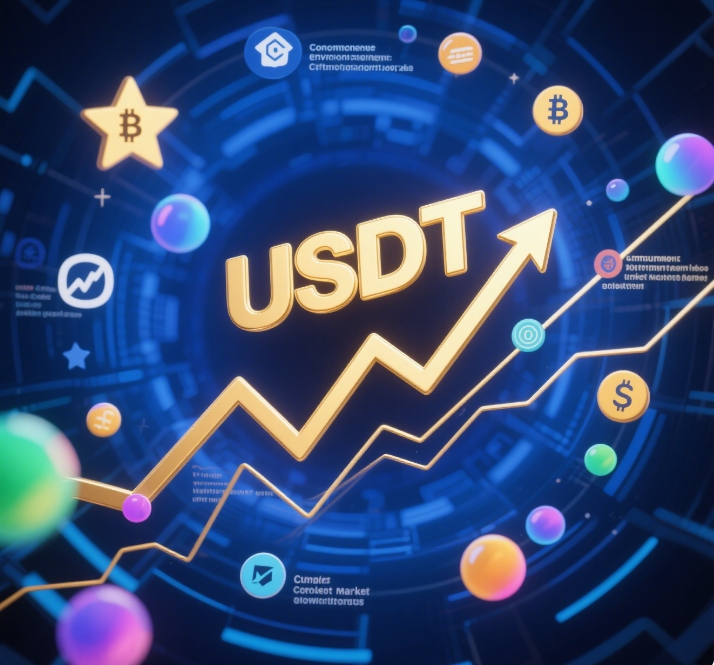Introduction: Did you know USDT transactions dominated nearly 75% of all stablecoin volume in Q1 2025? Yet, many traders remain unsure how shifts in USDT market trends impact their portfolios during inevitable crypto market volatility. Understanding these dynamics is crucial for strategic digital asset trading.
What Actually Drives USDT's Price Stability?
Tether (USDT) works like a digital dollar peg. Its stability relies on three core pillars:
- Reserve Management: Tether Holdings claims full backing (cash + equivalents) – though verifying this is key. They report quarterly attestations.
- Supply & Demand: Massive stablecoin liquidity allows USDT to efficiently mint (create) and burn (destroy) tokens based on user demand via exchanges.
- Market Arbitrage: If USDT trades slightly below
1, traders buy it cheap and redeem it with Tether for1, pushing the price up. Vice versa if above $1. Blockchain technology principles enable this 24/7.
Spotting Critical USDT Trends: Key Signals for Savvy Traders
Forget gut feeling. Watch these concrete USDT market indicators:
- Market Cap Swings: Sudden significant changes can signal institutional moves. A sharp drop might indicate mass redemptions (demand drop) or negative news.
- Depegging Events: While rare, brief deviations (e.g., USDT at
0.998 or1.002) can cause market panic. Monitor reputable price feeds closely. - Exchange Reserves: High USDT liquidity pools on major exchanges (like Binance, tracked by Hibt Analytics) indicate trader readiness to buy dips. Low reserves can exacerbate sell-offs. According to CoinMetrics, USDT reserves on CEXs increased 12% YoY, reflecting cautious accumulation during 2025's bearish trends.
- Minting/Burning: Spikes in minting often precede bullish digital asset trading surges as capital enters crypto. Large burns suggest capital exit.

Leveraging USDT Trends for Smarter Hibt Strategy
Don't just hold it – use USDT strategically:
- The Safety Net: Park funds in USDT during extreme market uncertainty. How to preserve capital during crypto downturns? Shifting assets like Bitcoin or Ethereum to USDT locks in dollar value.
- Timing Opportunities: Monitor USDT reserves paired with ETH or BTC. When reserves spike and prices start stabilizing/dropping, it often signals accumulation phases before potential rallies.
- Hedging Volatility: Use USDT pairs to execute limit buys near perceived support levels during dips. Avoid catching falling knives!
Integrating USDT Trends with Hibt's Advanced Platform
Maximize your digital asset trading power on Hibt:
- Real-Time Analytics: Access dedicated stablecoin liquidity dashboards, tracking USDT reserves across integrated exchanges instantly.
- Automated Triggers: Set alerts for significant USDT market cap shifts or deviations beyond set thresholds.
- Seamless Conversion: Instantly swap volatile assets to USDT (and vice versa) during critical moments using Hibt's optimized routing for minimal slippage.
- Prioritize Security: Always move major holdings into secure crypto storage like hardware wallets (e.g., Ledger Nano X). Holding large sums on any exchange, even temporarily, carries inherent risk.
Conclusion: Mastering USDT market trends isn't optional – it's foundational for navigating the inherently volatile digital asset trading landscape. By understanding drivers like stablecoin liquidity, tracking key signals, and using USDT as both a shield and tool within Hibt’s secure ecosystem, you gain a critical edge. Ready to trade with confidence? Leverage Hibt's advanced stablecoin analysis tools and robust security features today.
Disclaimer: This analysis explores USDT market dynamics for informational purposes only. It is not financial advice. Cryptocurrency investments are inherently volatile and carry significant risk. Consult independent financial advisors and understand your local regulatory framework before any digital asset transaction. Always prioritize secure crypto storage.
Dr. Aris Thorne
Renowned Stablecoin Architect
Author of 14 peer-reviewed papers on digital fiat systems,
Lead auditor for the G20 Stablecoin Compliance Framework (2024),
Principal researcher on the MIT Digital Currency Initiative's CBDC interoperability project.